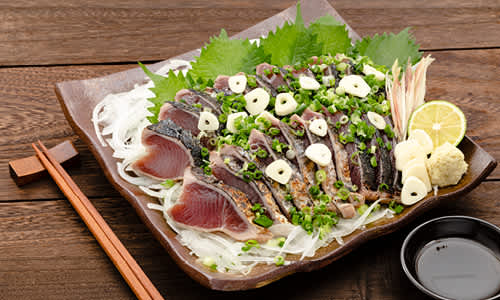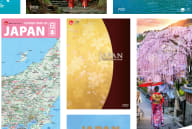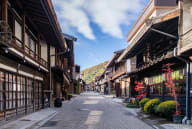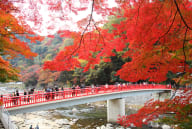
Kochi Where serenity meets culinary adventure in Japan's Untamed Heart
A Culinary Journey in Kochi
Situated along the southern coast of Shikoku, Kochi is a mesmerizing prefecture celebrated for its breathtaking natural scenery, rich cultural heritage, and lively culinary scene. Bordered by the Pacific Ocean to the south and the Shikoku Mountains to the north, Kochi enjoys a mild climate with warm summers and temperate winters, making it an ideal place for both agriculture and fishing.
Kochi is celebrated for its diverse agricultural produce, seafood, and unique local dishes. The fertile land and abundant rainfall support the cultivation of premium crops such as yuzu, a fragrant citrus fruit used to flavour various dishes and beverages, and Kochi's signature ginger, known for its spicy yet refreshing taste. The coastal waters teem with fresh seafood, including bonito, which is often enjoyed Tataki style— where the fish is lightly seared and served with garnishes such as garlic, ginger, and green onions. Additionally, Kochi is renowned for its sake, produced with pure water from the Shimanto River, enhancing its crisp and clean flavour.
The prefecture's culinary traditions are rivalled only by its craftsmanship – a stunning example of which are its Tosauchi Hamono knives, renowned for their exceptional quality and precision. These traditional Japanese knives are crafted by skilled artisans and are highly valued for their sharpness and durability, making them essential tools in both local kitchens and beyond. Kochi invites you to explore a world of discovery, where you can witness traditional knife making, immerse yourself in the excitement of the nationally renowned Yosakoi Festival, and savour the many blessings of its beautiful nature.
Embark on a journey to discover Kochi's gourmet food, renowned for its distinctive local flavour.
Katsuo-no-tataki (Seared bonito)

What it is (Ingredients)
Katsuo-no-tataki is a traditional dish featuring bonito, a type of tuna, lightly seared on the outside while leaving the inside raw or rare. Rice straw is often used as fuel because it burns quickly at high heat, eliminating the characteristic odour of bonito, enhancing the flavour, and making the skin crisp. The cooking method varies depending on the restaurant, but typically, the fish is sprinkled with salt and lightly beaten with a knife to blend the flavours. It is then served with condiments like garlic, green onion, ginger, wasabi, Shiso leaves (Japanese basil), sliced onions and a special soy sauce-based sauce. When eating, it should be kept cold. Searing the surface imparts a smoky aroma, reduces the excess moisture in the meat, improves the texture, and enriches the flavour, offering a unique taste distinct from sashimi.
History/Origin
Originating in Kochi, Katsuo-no-tataki has deep roots in local fishing traditions. Fishers would prepare bonito immediately after catching it by searing it briefly over an open flame. This method not only preserves the freshness of the fish and ensures it is safe to eat, but also highlights its natural richness and umami taste.
Where to Eat
Katsuo-no-tataki is a popular dish served at restaurants, traditional Japanese eateries, and seafood markets throughout Kochi prefecture. Its light yet satisfying flavours make it an ideal dish for warm-weather dining, paired perfectly with a chilled glass of local sake.
When to Eat
Katsuo-no-tataki is best enjoyed during the spring and autumn when bonito is in season and at its peak freshness. In general, spring bonito has less fat and offers a refreshing taste, while autumn bonito has more fat, resulting in a softer flavour and firmer texture.
Experience the exquisite flavours of Kochi with Katsuo-no-tataki, a testament to the prefecture's rich culinary heritage and commitment to quality seafood.
Imokenpi (Sweetened sweet potato fries)

What it is (Ingredients)
Imokenpi are sweetened sweet potato fries, made from thinly sliced sweet potatoes coated in sugar. In Japanese, Imo means potato, and Kenpi refers to a long, thin baked sweet snack made from wheat flour that has been a staple in Kochi since ancient times.
History/Origin
Imokenpi originated in Kochi, where they have been enjoyed as a popular local snack for generations. It is said that in the 1700s, a samurai brought sweet potatoes to Kochi from Kagoshima, and they quickly gained popularity. At that time, sweet potatoes fried in precious oil were a rarity and were reserved for special occasions.
Where to Eat
Imokenpi can be found at various food stalls, markets, and specialty shops throughout Kochi prefecture. These crispy fries are often served hot and freshly fried, making them a favourite among locals and visitors.
When to Eat
Imokenpi is best enjoyed as a snack or dessert throughout the year, offering a comforting treat that combines the earthy sweetness of sweet potatoes with a satisfying crunch.
Indulge in the crispy sweetness of Imokenpi, a delicious, easy-to-eat, and nutritious snack that captures the essence of Kochi's culinary traditions.































































